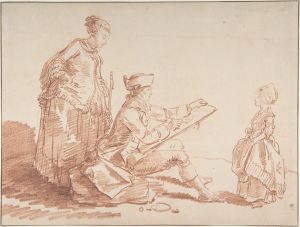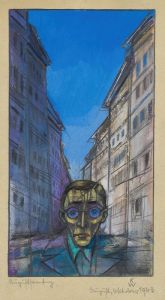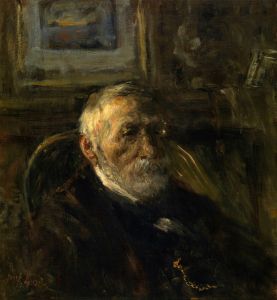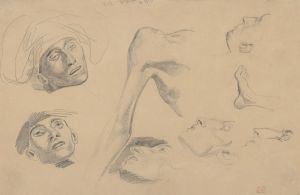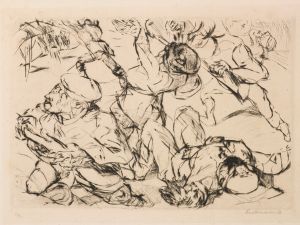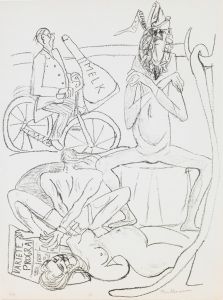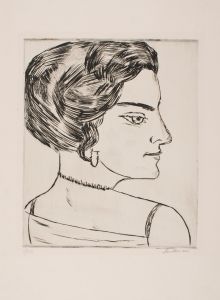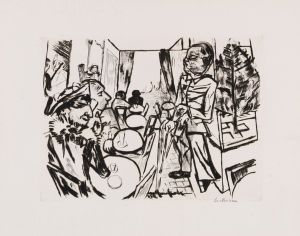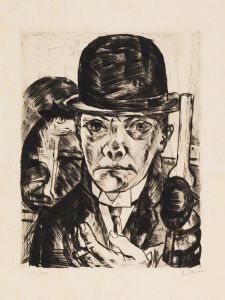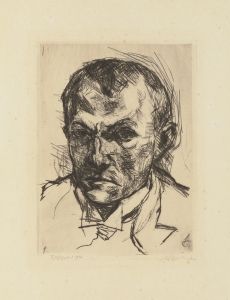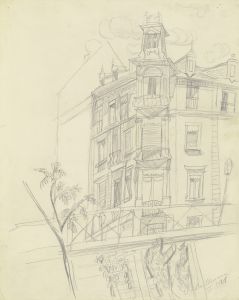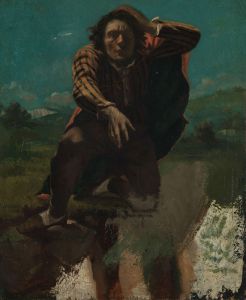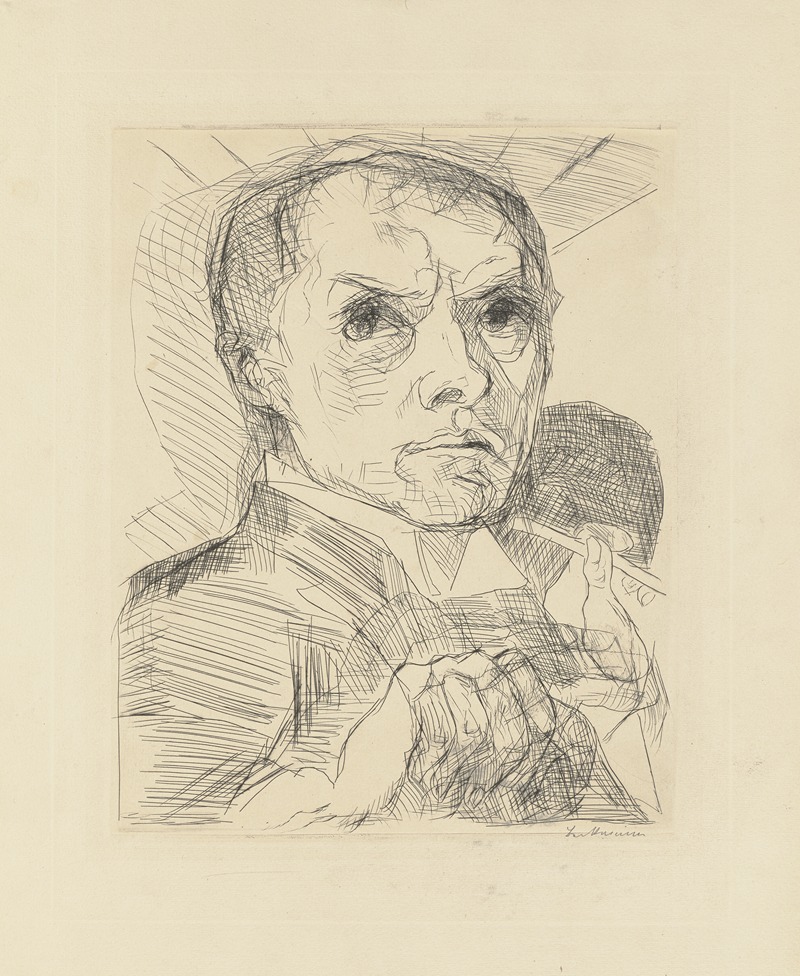
Self-Portrait with Stylus
A hand-painted replica of Max Beckmann’s masterpiece Self-Portrait with Stylus, meticulously crafted by professional artists to capture the true essence of the original. Each piece is created with museum-quality canvas and rare mineral pigments, carefully painted by experienced artists with delicate brushstrokes and rich, layered colors to perfectly recreate the texture of the original artwork. Unlike machine-printed reproductions, this hand-painted version brings the painting to life, infused with the artist’s emotions and skill in every stroke. Whether for personal collection or home decoration, it instantly elevates the artistic atmosphere of any space.
Max Beckmann's "Self-Portrait with Stylus" is a significant work within the oeuvre of the German painter, known for his intense and expressive style. Beckmann, born in 1884 in Leipzig, Germany, is often associated with the New Objectivity movement, which emerged in the Weimar Republic as a counter to expressionism. His works frequently explore themes of identity, existential angst, and the human condition, often reflecting the tumultuous socio-political landscape of early 20th-century Europe.
"Self-Portrait with Stylus," created in 1938, is one of Beckmann's many self-portraits, a genre he revisited throughout his career. This particular work is notable for its introspective quality and the way it encapsulates Beckmann's complex relationship with his own identity as an artist. The painting features Beckmann holding a stylus, a tool traditionally associated with writing or drawing, which underscores his role as a creator and commentator on the world around him.
The timing of this self-portrait is significant. In 1937, Beckmann was labeled a "degenerate" artist by the Nazi regime, which led to the removal of his works from German museums and his eventual emigration to Amsterdam. This period of exile and uncertainty is reflected in the somber and contemplative nature of the self-portrait. The painting's composition and Beckmann's expression convey a sense of resilience and defiance, as well as a deep introspection about his place in a world that had become increasingly hostile to his art and ideas.
Beckmann's use of color and form in "Self-Portrait with Stylus" is characteristic of his mature style. The bold lines and stark contrasts create a dramatic effect, drawing the viewer's attention to the artist's face and the stylus in his hand. The background is relatively plain, ensuring that the focus remains on the figure of Beckmann himself. This simplicity in the setting allows for a more profound engagement with the psychological depth of the portrait.
Throughout his career, Beckmann's self-portraits served as a means of self-exploration and commentary on his evolving identity. "Self-Portrait with Stylus" is no exception, offering insight into his state of mind during a period of personal and professional upheaval. The painting is a testament to Beckmann's enduring commitment to his art, even in the face of adversity.
Today, Max Beckmann is recognized as one of the most important artists of the 20th century, and his self-portraits, including "Self-Portrait with Stylus," are celebrated for their emotional intensity and technical mastery. This work, like many of his others, continues to be studied and appreciated for its contribution to modern art and its poignant reflection of the artist's life and times.





